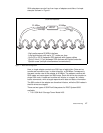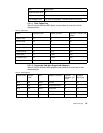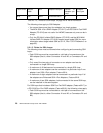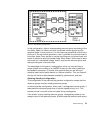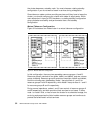Cluster Planning 25
• Array member drives and spares must be on same loop (cannot span A
and B loops) on the adapter.
• You cannot boot (ipl) from a RAID.
2.3.1.5 Advantages
Because SSA allows SCSI-2 mapping, all functions associated with initiators,
targets, and logical units are translatable. Therefore, SSA can use the same
command descriptor blocks, status codes, command queuing, and all other
aspects of current SCSI systems. The effect of this is to make the type of disk
subsystem transparent to the application. No porting of applications is
required to move from traditional SCSI I/O subsystems to high-performance
SSA. SSA and SCSI I/O systems can coexist on the same host running the
same applications.
The advantages of SSA are summarized as follows:
• Dual paths to devices.
• Simplified cabling - cheaper, smaller cables and connectors, no separate
terminators.
• Faster interconnect technology.
• Not an arbitrated system.
• Full duplex, frame multiplexed serial links.
• 40 MBps total per port, resulting in 80 MBps total per node, and 160 MBps
total per adapter.
• Concurrent access to disks.
• Hot-pluggable cables and disks.
• Very high capacity per adapter - up to 127 devices per loop, although most
adapter implementations limit this. For example, current IBM SSA
adapters provide 96 disks per Micro Channel or PCI slot.
• Distance between devices of up to 25 meters with copper cables, 10km
with optical links.
• Auto-configuring - no manual address allocation.
• SSA is an open standard.
• SSA switches can be introduced to produce even greater fan-out and
more complex topologies.



